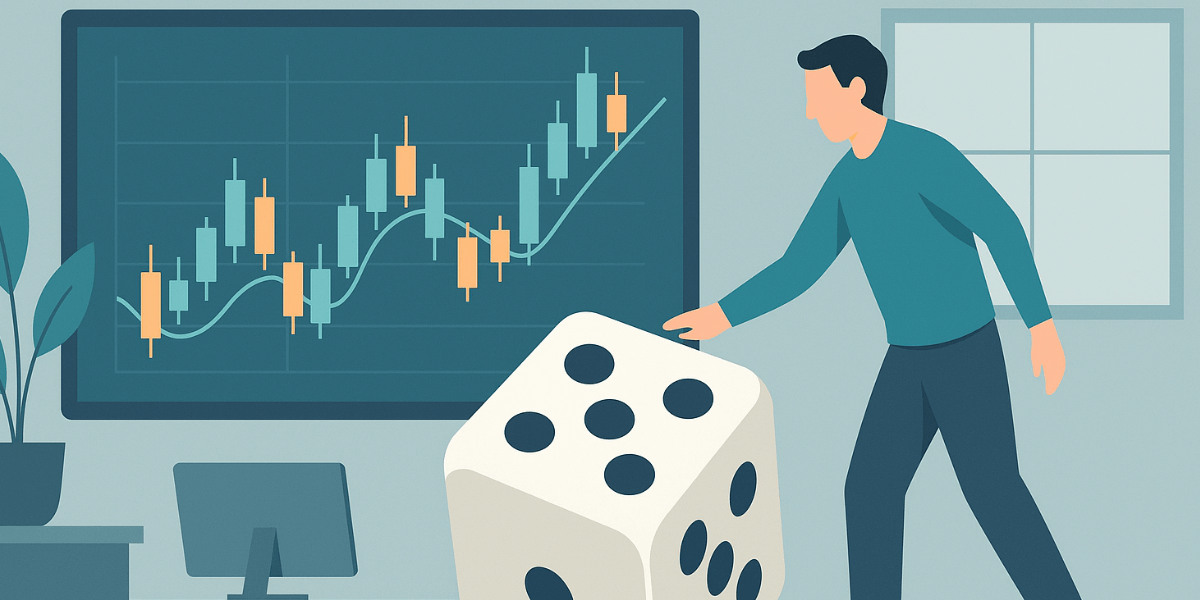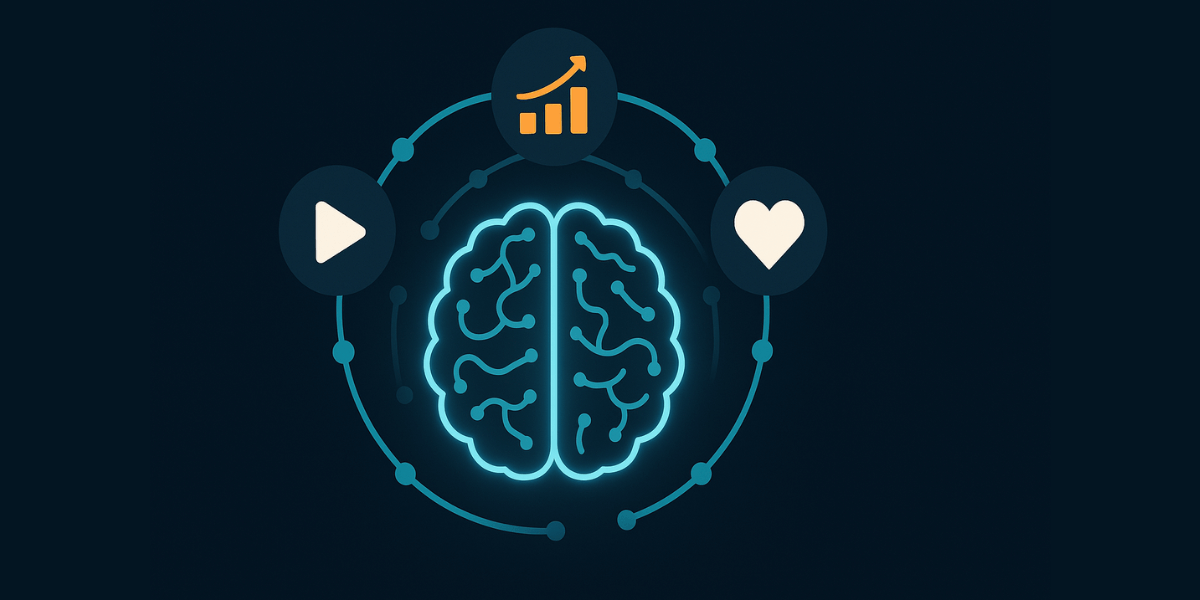Behind every flashing chart and data feed in the forex market, there is a human being confronting uncertainty. Numbers may move with mathematical precision, but decisions come from emotion—hope, fear, pride, frustration, and the silent, invisible pressure to perform. For many traders, that pressure crystallizes into something deeper: performance anxiety. It is a condition as old as competition itself, yet uniquely intensified in trading because the scorecard updates in real time and the opponent is often one’s own mind.
Performance anxiety in forex trading is not merely nervousness before executing a trade. It is the psychological weight of self-expectation combined with the relentless feedback loop of profit and loss. The trader’s battlefield is not just the market, but the inner dialogue that questions every decision. Understanding this phenomenon—and learning to navigate it—is essential for anyone seeking longevity and stability in the world’s most liquid and unforgiving market.
Understanding Performance Anxiety in Trading
In psychology, performance anxiety refers to a state of heightened stress that occurs when an individual perceives high stakes and doubts their ability to meet expectations. In forex trading, this manifests as overthinking entries, hesitating to exit, chasing trades after losses, or avoiding trading altogether out of fear of failure. It is not a sign of weakness; it is a predictable human response to risk, uncertainty, and ego.
Trading amplifies these stressors because it compresses feedback into seconds. A decision that would take months to validate in a business or investment context reveals its outcome almost instantly on a trading screen. Every pip becomes a referendum on competence. Over time, this hyper-responsiveness conditions the brain to associate trading with danger rather than opportunity.
Common Symptoms of Performance Anxiety in Traders
- Physical tension, shallow breathing, elevated heart rate before executing trades.
- Compulsive checking of positions and news updates.
- Avoiding trading sessions after losses or before important releases.
- Overtrading to “make up” for missed opportunities.
- Ruminating over past mistakes, replaying “what if” scenarios.
The paradox is clear: the same desire for excellence that drives traders to succeed can become the source of paralysis when outcomes are uncertain. The key lies in reframing both success and failure—not as reflections of self-worth, but as data in a continuous learning process.
Why Forex Trading Intensifies Psychological Pressure
Unlike traditional investing, forex trading is a zero-sum, leveraged environment where timing and psychology dominate. The absence of long-term fundamentals means traders rely heavily on skill and self-discipline. This makes trading an emotional mirror—every weakness is exposed, magnified, and reflected back instantly. Several structural features of the forex market exacerbate performance anxiety:
- High leverage: Small mistakes can lead to large losses, amplifying fear and self-doubt.
- Continuous feedback: 24-hour market sessions prevent mental detachment. The trader never fully “clocks out.”
- Lack of validation: Unlike other professions, traders receive little external affirmation—only the balance curve speaks.
- Isolation: Many traders work alone, without teams or mentors to normalize setbacks.
These conditions form a psychological ecosystem where the line between strategy and emotion blurs. The trader who cannot separate personal identity from trading performance becomes trapped in a feedback loop: self-worth rises and falls with the equity curve.
The Cognitive Mechanics of Trading Anxiety
Performance anxiety is fundamentally a cognitive distortion—a misalignment between perceived threat and actual consequence. When a trader views a single trade as a test of intelligence, value, or future livelihood, the mind triggers a survival response. The sympathetic nervous system floods the body with adrenaline and cortisol. In biological terms, the trader is not analyzing; they are surviving. The brain treats a losing trade the way it treats a predator encounter: with fight, flight, or freeze.
Under such stress, the prefrontal cortex—the seat of reasoning—temporarily shuts down, and impulsive, emotional behaviors take over. This explains why traders often do exactly what they swore not to do: move stops, double down, revenge trade, or abandon discipline. Their physiology overrides their intellect. In the long run, this cycle erodes both capital and confidence.
Short-Term vs Long-Term Performance Anxiety
| Type | Characteristics | Impact on Trading | Solution Focus |
|---|---|---|---|
| Short-Term Anxiety | Triggered by upcoming trades, economic events, or recent losses. | Leads to hesitation, premature exits, or avoidance of valid setups. | Breathing control, ritualization, exposure to trading stress in small doses. |
| Long-Term Anxiety | Chronic worry about trading ability, career path, or financial future. | Reduces motivation, causes burnout, erodes strategic clarity. | Goal restructuring, mentorship, diversification of identity beyond trading. |
Understanding which form dominates is crucial. Short-term anxiety can often be managed with techniques that restore physiological calm. Long-term anxiety, by contrast, requires a redefinition of one’s relationship to trading itself.
Reframing Success and Failure
The mind of a high-performing trader must learn to reinterpret loss not as evidence of failure but as feedback. This cognitive reframing is central to professional growth. In forex, where even top traders can lose half their trades, success is statistical, not emotional. But for the anxious trader, this probabilistic truth is difficult to internalize. The emotional brain craves certainty; the market offers none.
To manage anxiety, traders must decouple outcome from identity. The goal is not to be “right” but to execute a process consistently. The irony is that once the need to be right fades, accuracy improves because clarity replaces fear.
Building Psychological Resilience
Resilience is not the absence of fear but the capacity to act in spite of it. Developing psychological resilience requires structured practice. Professional traders cultivate emotional durability much as athletes train endurance. The process involves deliberate exposure to discomfort, routine, and feedback loops that prioritize learning over outcome.
Core Components of Trading Resilience
- Ritualization: Establish pre-trade routines that cue focus and calm—like breathing exercises, journaling, or reviewing setups.
- Journaling: Record not only trades but emotions and thought patterns. Over time, patterns of fear or impulsivity become visible.
- Detachment from results: Focus on execution metrics (e.g., following the plan) rather than profit metrics.
- Scheduled breaks: Step away regularly to prevent cumulative stress from distorting decision-making.
- Physical well-being: Exercise and sleep regulate cortisol levels, directly influencing cognitive performance.
Common Triggers of Performance Anxiety in Forex
- Recent Drawdowns: A string of losses can make every subsequent trade feel like a test of redemption.
- Public Accountability: Traders who share results online or manage client funds often feel magnified pressure.
- High Expectations: Unrealistic profit goals create anxiety even during profitable phases.
- Lack of Recovery Time: Trading continuously without psychological reset leads to fatigue-based anxiety.
Recognizing triggers transforms anxiety from a mystery into a mechanism. Once identified, triggers can be anticipated, reframed, and managed.
Practical Techniques to Manage Anxiety During Trading
1. The “Pause-Observe-Act” Technique
Before every trade, pause for 10 seconds. Observe your body: Are you tense? Are you holding your breath? Acknowledge the emotion, then act only if the signal still fits your plan. This practice reconnects cognition to execution.
2. Exposure Therapy
Gradually expose yourself to trading discomfort. For instance, trade smaller positions in stressful environments like high volatility until the sensation of risk normalizes. Over time, the brain habituates to uncertainty.
3. Visualization
Visualize the process of executing trades calmly and consistently. Imagine both winning and losing trades handled with composure. Visualization trains emotional expectation before reality tests it.
4. Breathing and Somatic Regulation
Slow, rhythmic breathing (four seconds inhale, six seconds exhale) reduces sympathetic arousal. Traders who apply breathwork before and during volatile sessions maintain sharper focus and lower reactivity.
5. Cognitive Defusion
From acceptance-based therapy, this involves labeling thoughts without attaching to them. Instead of “I’m going to lose again,” think “I’m having the thought that I might lose again.” The distance between thought and self weakens the emotional charge.
The Role of Environment in Emotional Regulation
Environment shapes behavior. A chaotic workspace, loud distractions, or erratic routines reinforce stress. Conversely, a structured, minimalist environment signals control and stability to the subconscious mind. Many professional traders use sensory cues—lighting, music, scents—to anchor themselves psychologically to a state of focus.
Even the act of sitting at a clean, ordered desk can reduce anxiety. The brain associates spatial order with predictability, which reduces the cognitive load needed to manage uncertainty. The principle is simple: external order supports internal order.
Mentorship, Community, and the Social Brain
Humans are social learners. Isolation amplifies anxiety because it deprives the brain of context. Mentorship, trading communities, and peer discussion normalize loss and provide shared vocabulary for emotional experience. When traders realize others face the same doubts, shame diminishes, and perspective returns.
However, community must be curated carefully. Echo chambers that glorify risk or mock caution exacerbate pressure. The right circle promotes accountability without judgment, discussion without comparison.
The Paradox of Mastery: When Control Becomes a Trap
Many traders develop anxiety not from lack of control, but from trying to exert too much. The attempt to predict every variable or eliminate uncertainty transforms trading into an impossible perfectionist pursuit. The paradox is that control is achieved only by surrendering to the uncontrollable. Mastery lies not in knowing every outcome but in remaining composed amid ambiguity.
Performance vs. Process Orientation
The anxious trader focuses on results; the resilient trader focuses on process. This distinction separates professionals from gamblers. A performance orientation seeks validation; a process orientation seeks refinement. Anxiety thrives on external metrics (profit, ranking, recognition). Calm grows from internal metrics (discipline, adherence, clarity).
Comparative Framework
| Dimension | Performance-Oriented Trader | Process-Oriented Trader |
|---|---|---|
| Focus | Profit and loss on each trade | Consistency of strategy execution |
| Emotional State | Volatile; self-worth tied to outcomes | Stable; self-worth tied to discipline |
| Learning Style | Reactive; blames or celebrates luck | Reflective; extracts patterns from data |
| Motivation | External validation | Internal growth |
Transitioning from performance to process orientation takes time. It requires redefining what “winning” means—not making money, but making correct decisions regardless of outcome.
Integrating Mindfulness Into Trading
Mindfulness is the practice of sustained awareness without judgment. In trading, it means observing the market and one’s own reactions simultaneously. Mindful traders are aware of impulses without being ruled by them. Over time, mindfulness rewires the stress response: volatility stops feeling dangerous and starts feeling neutral.
Simple daily mindfulness routines—five minutes of breath focus before market open or reflection after sessions—strengthen attention and emotional control. The cumulative effect is profound: anxiety transforms into alertness, fear into focus.
The Long View: Redefining Identity Beyond Trading
Performance anxiety often stems from identity fusion: when “trader” becomes synonymous with “person.” This fusion is dangerous because any drawdown becomes an existential threat. Diversifying identity—through hobbies, relationships, learning, or teaching—protects mental health and stabilizes confidence.
When trading is one part of a balanced life rather than its entire foundation, anxiety loses its dominance. The goal is not detachment from ambition, but perspective within it.
Conclusion
Performance anxiety in forex trading is not a flaw—it is evidence of care. It signals engagement, ambition, and human vulnerability in a domain that rewards mechanical precision. The challenge is to transmute that anxiety from paralysis into presence. By cultivating resilience, mindfulness, community, and process orientation, traders transform fear into focus and uncertainty into opportunity.
Ultimately, the journey is not about eliminating anxiety but learning to trade with it—using its energy as a signal rather than a threat. The calm trader is not fearless; they are practiced. They have learned, through repetition and reflection, that the market’s chaos mirrors the mind’s own turbulence—and that mastery of one requires compassion for the other.
Frequently Asked Questions
What causes performance anxiety in forex traders?
It arises from the pressure to perform, fear of loss, identity fusion with results, and the constant feedback loop of profit and loss. Leverage, volatility, and isolation intensify the experience.
How can I tell if I have trading anxiety?
Symptoms include physical tension, hesitation to trade, emotional overreactions, avoidance of setups, and obsessive review of results. Awareness is the first step to change.
Does experience eliminate anxiety?
Not entirely. Experience reframes anxiety as useful arousal rather than danger. Professionals still feel stress—they have simply trained their response.
What daily practices help reduce anxiety?
Structured routines, pre-trade breathing, mindfulness, journaling, and breaks between sessions all reduce cognitive load and emotional volatility.
How does mindset affect trading results?
Mindset determines consistency. A calm, process-oriented mindset allows adherence to strategy, while anxiety-driven decisions distort risk management and performance.
Can therapy or coaching help traders?
Yes. Cognitive-behavioral therapy, performance coaching, and mindfulness-based interventions help traders identify cognitive distortions and build healthier emotional patterns.
Is anxiety always bad?
No. Mild anxiety enhances alertness. The goal is not to eliminate it, but to keep it within optimal arousal levels that support focus without panic.
Why do some traders perform better under pressure?
They have trained physiological control and reframed stress as challenge, not threat. Habitual exposure to uncertainty builds tolerance.
How can community support mental stability?
Peer connection reduces isolation and normalizes setbacks. Talking through emotions transforms shame into shared learning.
What is the ultimate goal in managing performance anxiety?
To trade from presence, not fear—to turn uncertainty into an ally by aligning mind, body, and process. Mastery begins where control ends and awareness begins.
Note: Any opinions expressed in this article are not to be considered investment advice and are solely those of the authors. Singapore Forex Club is not responsible for any financial decisions based on this article's contents. Readers may use this data for information and educational purposes only.







